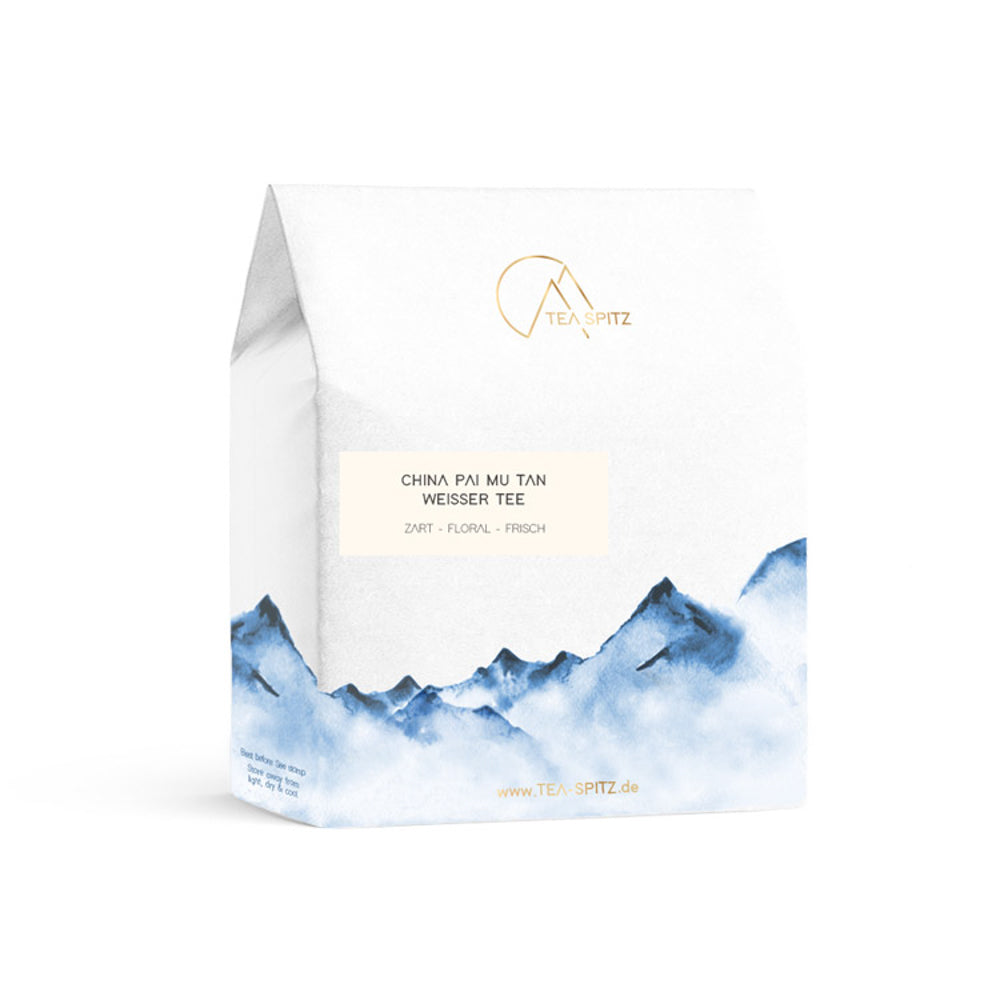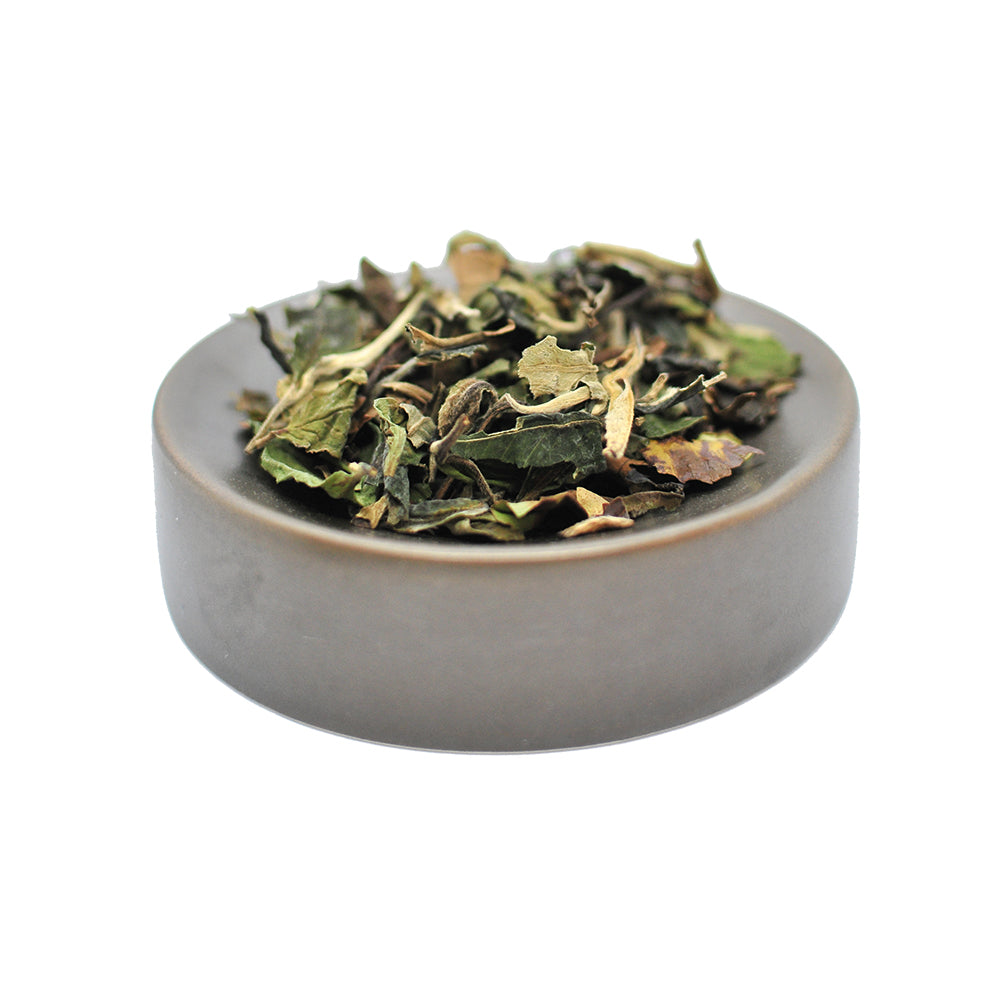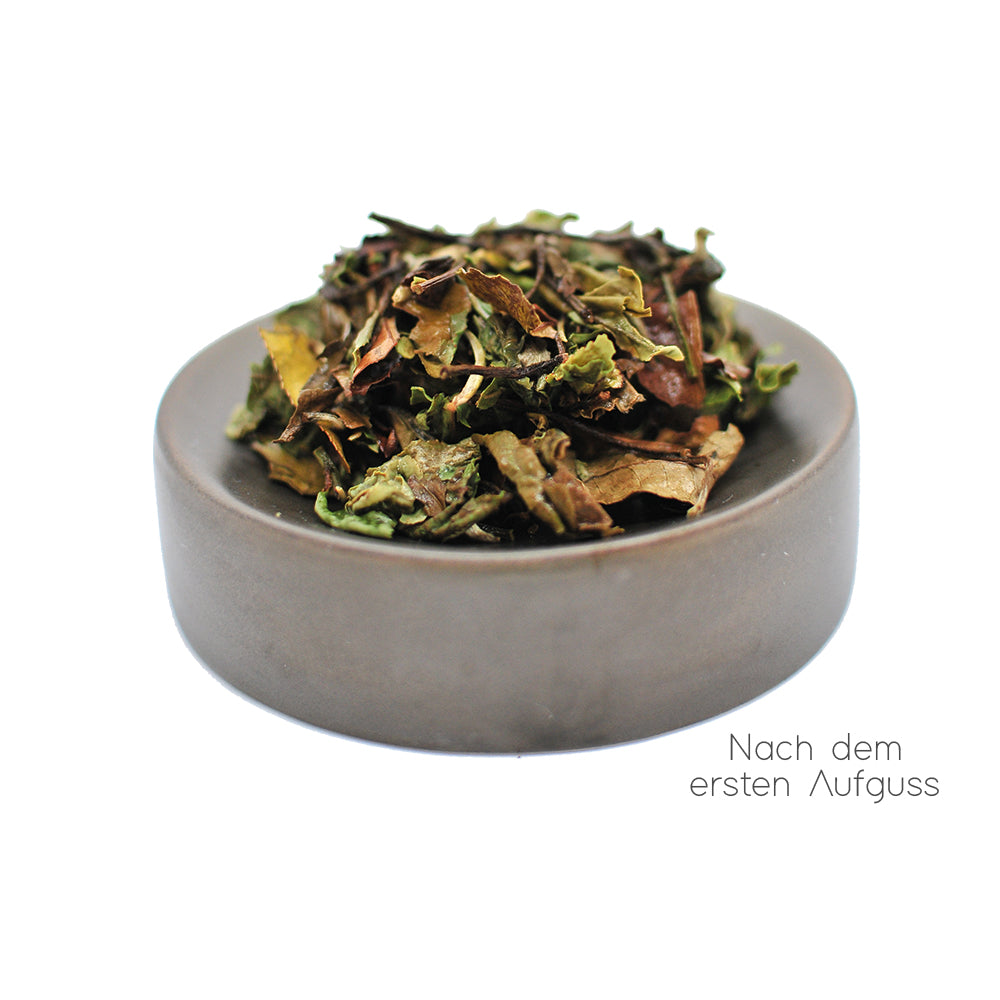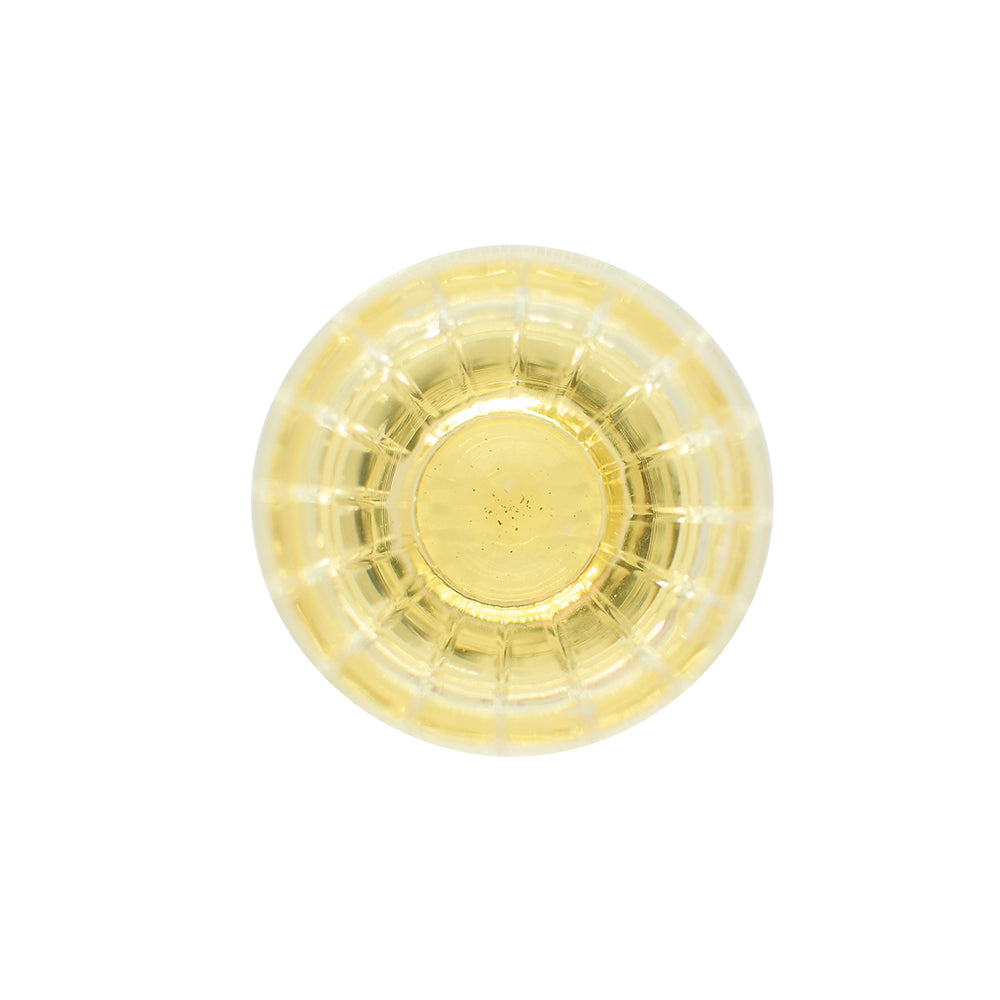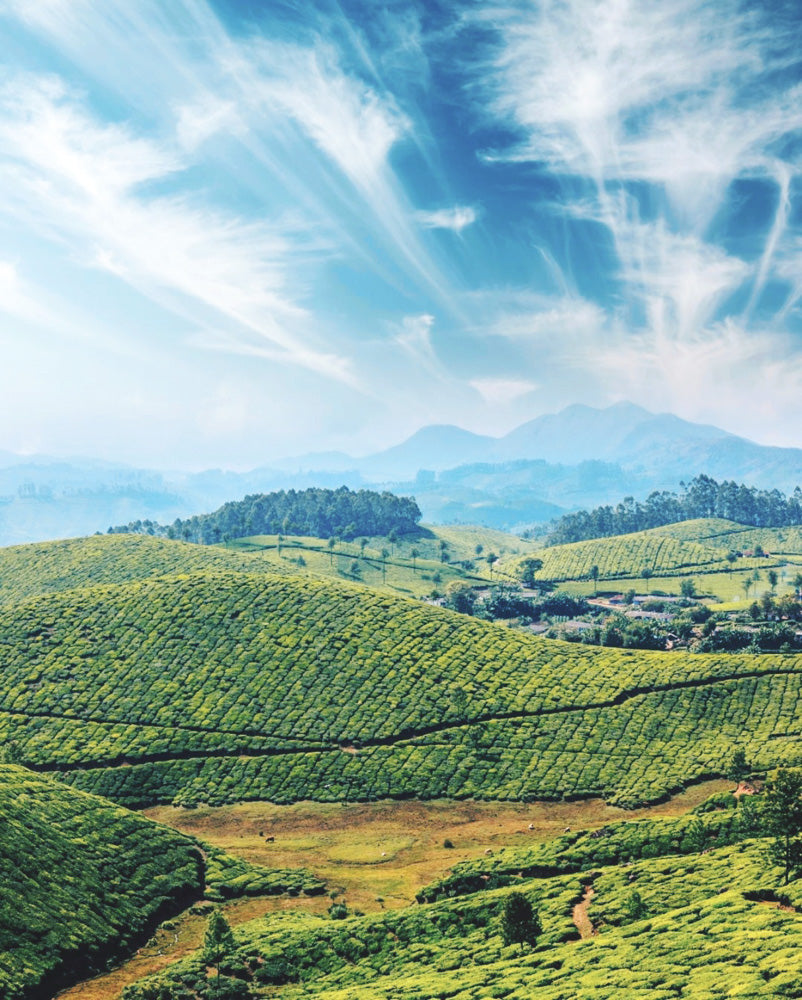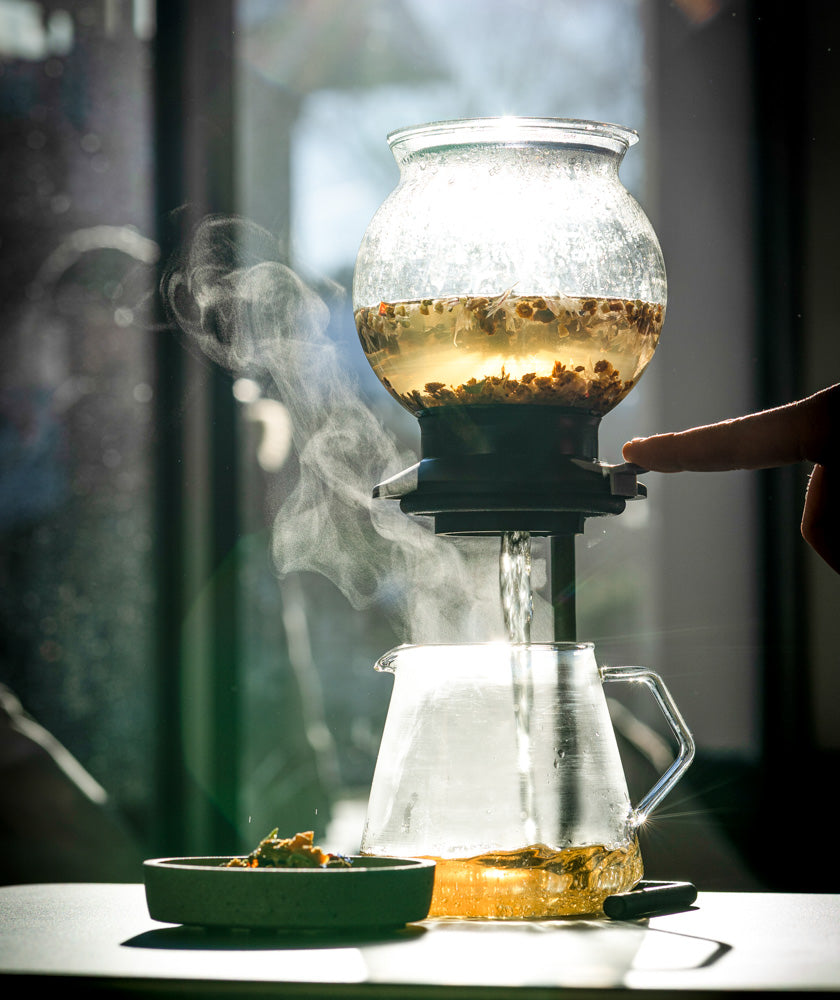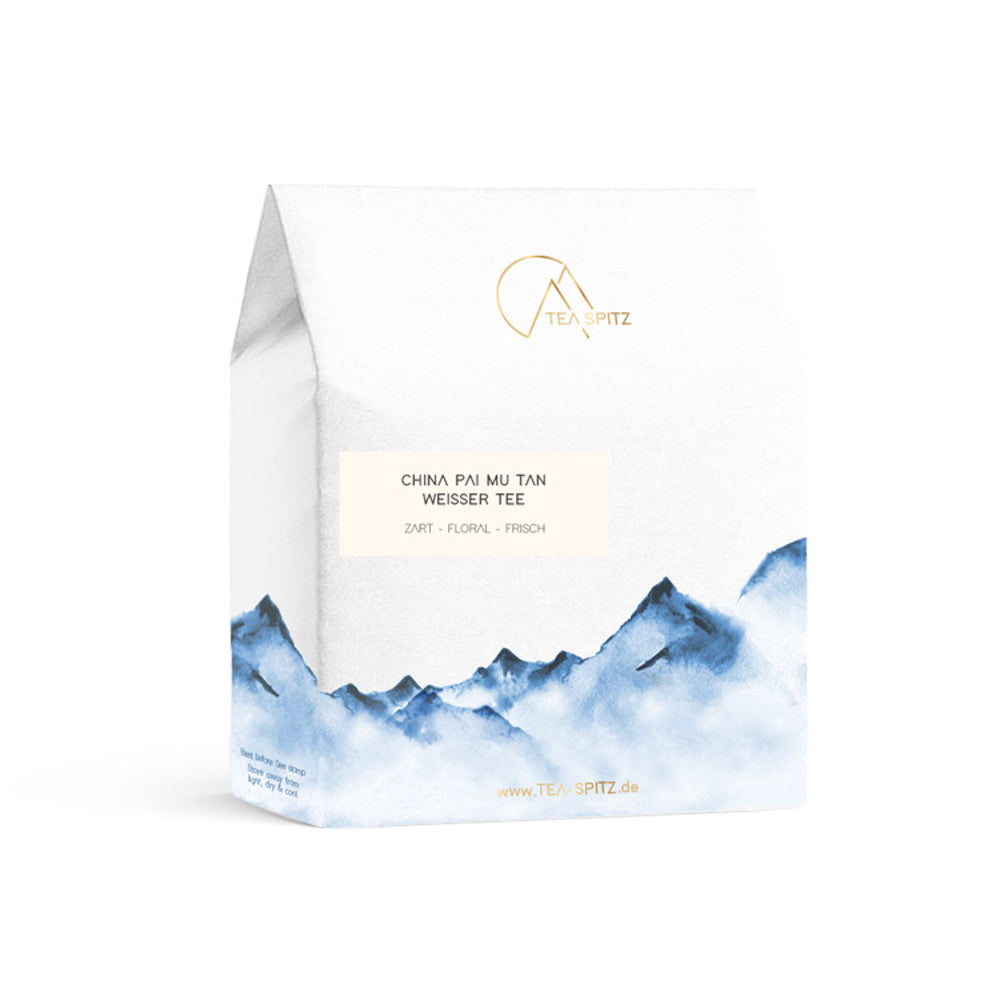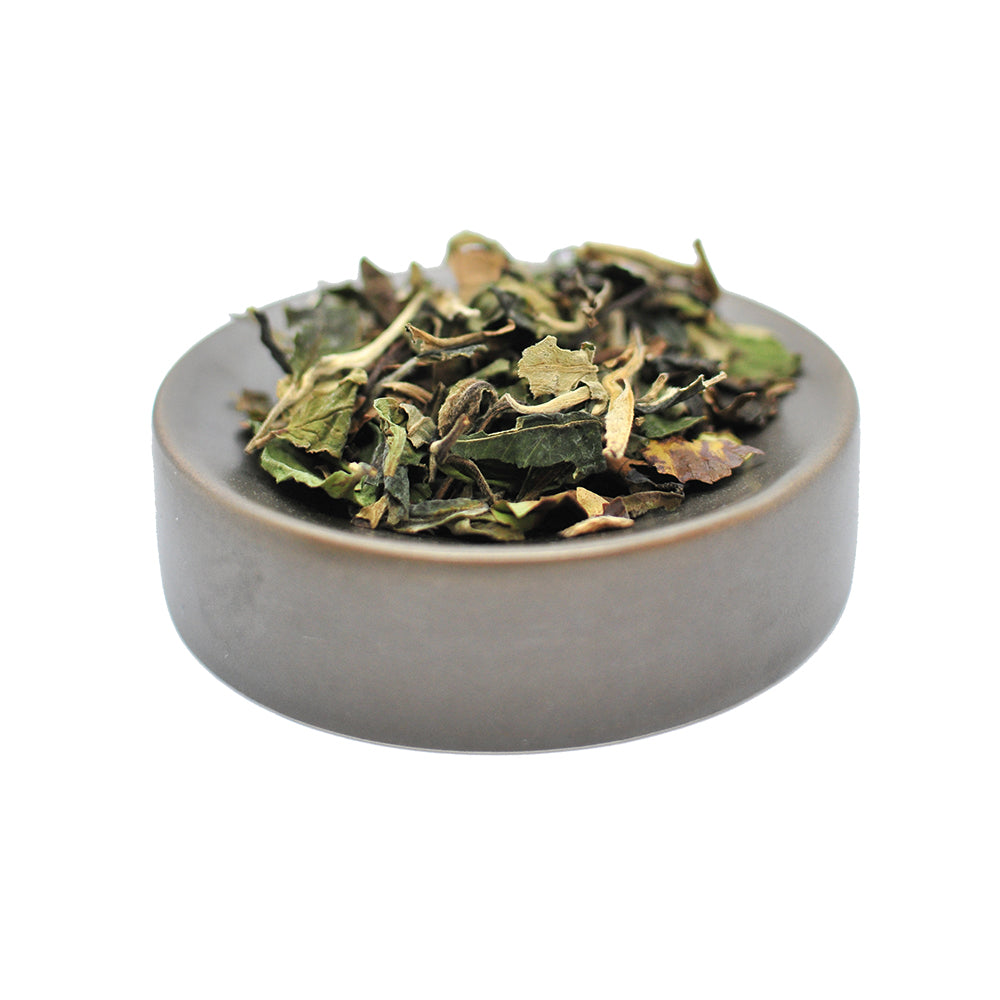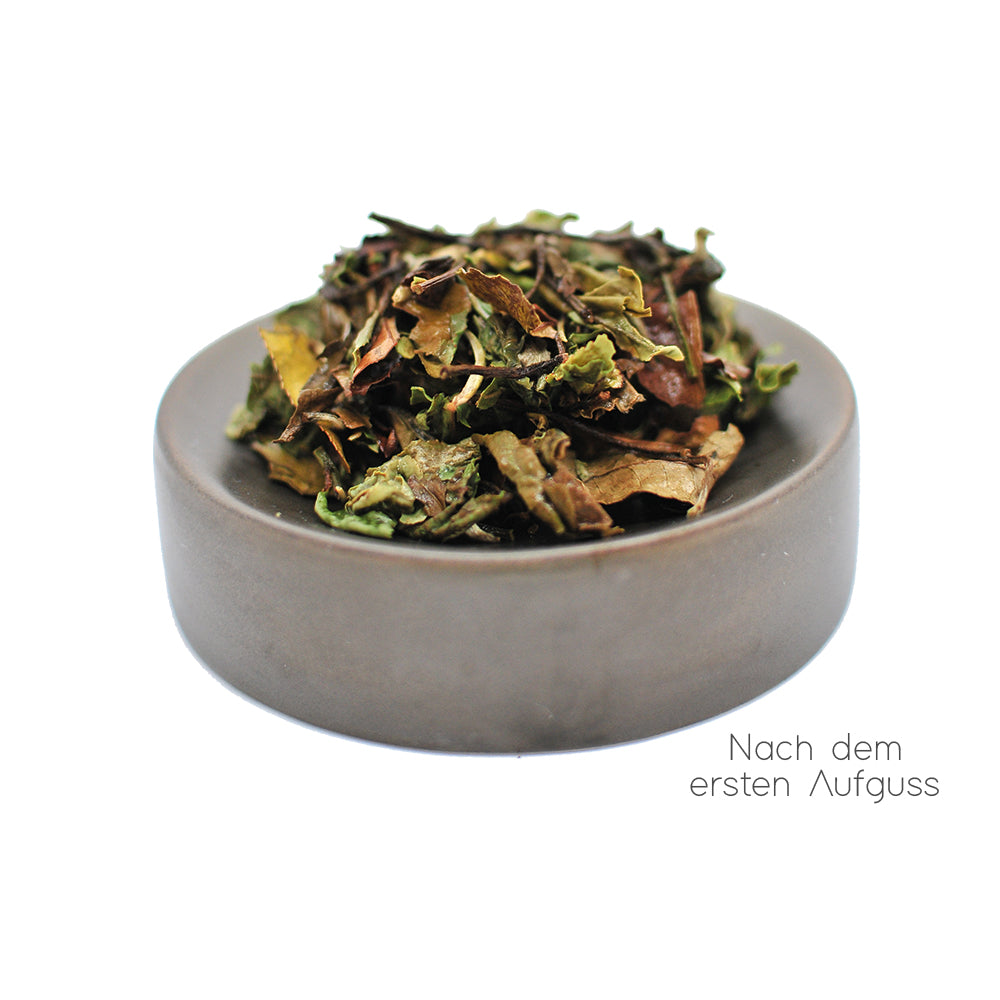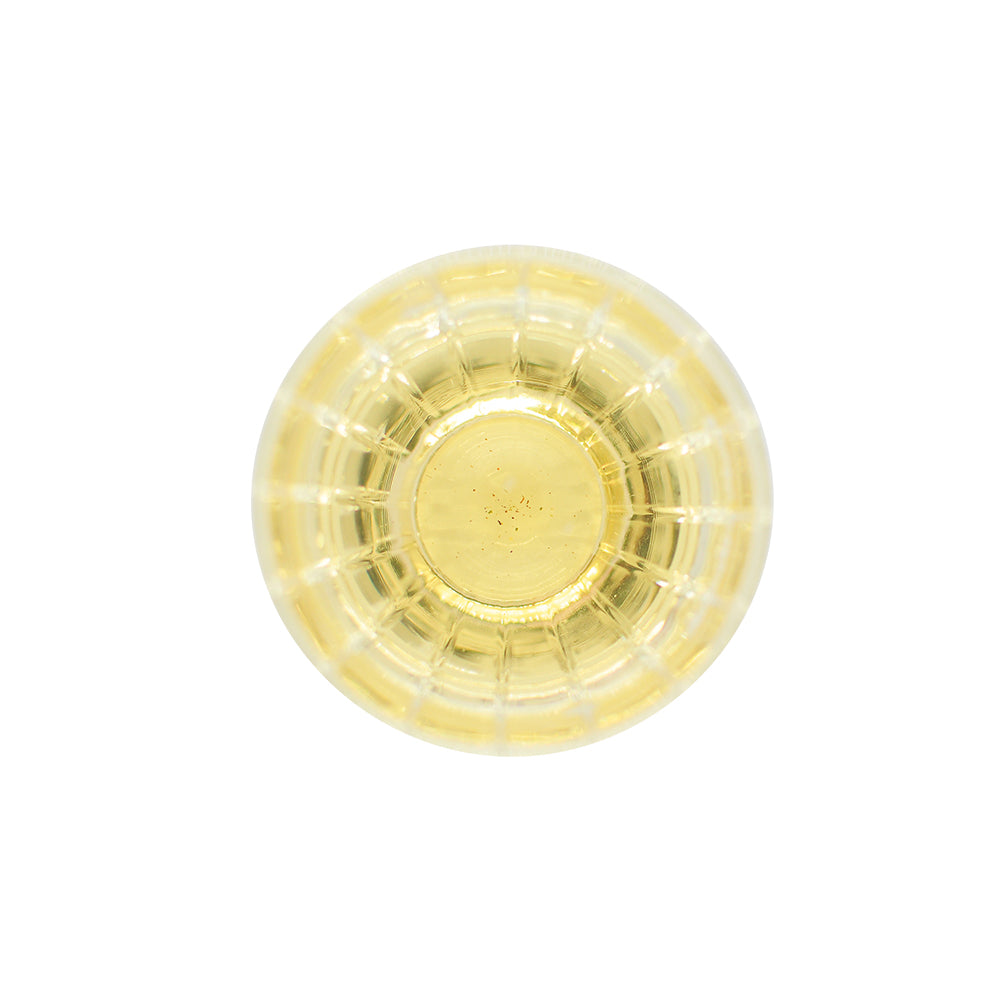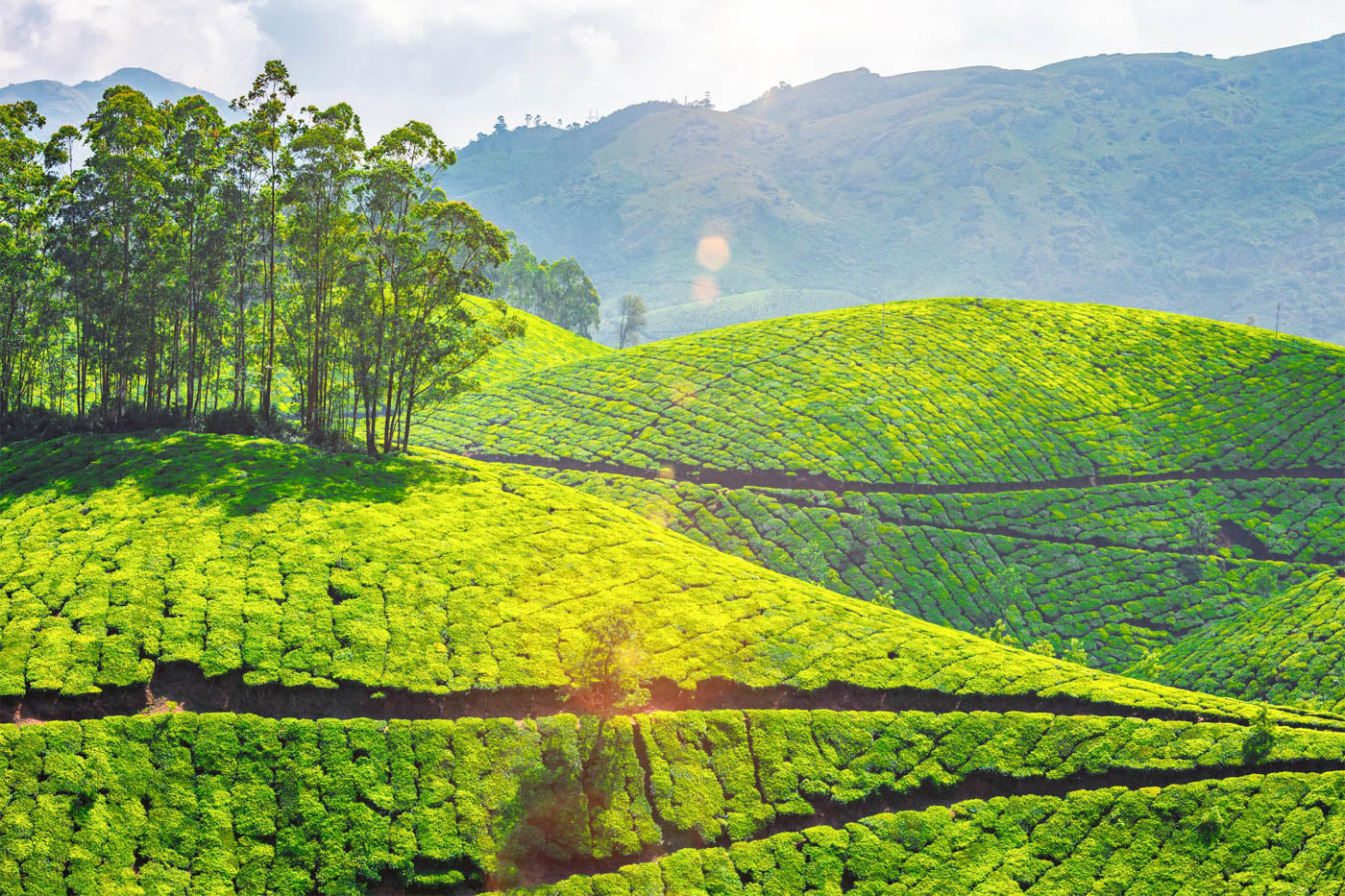Story
White tea, especially China Pai Mu Tan (also called White Peony), is considered a real delicacy. Compared to other types of tea (green tea, black tea, oolong, etc.), it is the least processed. To produce Pai Mu Tan, the plant must be harvested before it opens completely. Farmers pick the very young buds from the plant, which are still covered with very fine white hairs: this is why it is called white tea.
Immediately after picking the buds and the first leaves, they are laid out to dry to avoid any oxidation. In this way, the leaves retain their green color and the infusion is very fresh and delicate.
It is believed that during the time of the Chinese emperors between the years 600 and 1300, citizens had to pay the emperor an annual tribute in the form of the finest tea. This tea tax was usually paid with white teas, as these were the youngest and most tender buds of the highest quality tea plants.
Just as in the days of the old tea tax, white teas are still considered a very fine delicacy today. Their fine flavors and aromas are rare and highly valued. Even today, white tea is harvested and processed by hand, which makes it even more special.
region
China Pai Mu Tan comes from Fuding in the Chinese province of Fujian, a region where tea has been grown for more than 1,000 years and is the cradle of white tea.
When should you drink China Pai Mu Tan?
China Pai Mu Tan is the perfect brew if you are looking for a relaxing moment but still want to enjoy a beautiful, complex cup.
